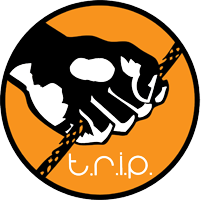Yosemite Rescue Film Precursor
A Brief
Description of How Kickstarter.com Works:
As
we wrap up the final details of our kickstarter.com proposal and await the
approval from the website to launch our Yosemite Rescue Film project, I think it may serve to everyone’s
benefit to learn a little more about how this website works.
Kickstarter is a website through which
creative projects seek funding through the sale of gifts.
- These gifts have retail value once the project is completed, and the gifts are priced at that fair retail value or less.
- The gifts are centered on the product that the project is creating, and often times add value to the project “backer” by offering a unique experience on top of the product involved.
- In the case of the gifts we are offering, we are giving our supporters a chance to get involved and show their support in the organization from the very start. All of our gifts will include a special thanks with your name or business in the credits of our film.
- It's less risk for everyone. If a project needs X amount of dollars and the funding falls short of that, it frees the creators of liability to deliver the project on insufficient funds. The backers never paid the amount pledged, so life goes on and the creators try again.
- It allows people to test concepts (or conditionally sell stuff) without risk. This is huge for us!
- It motivates. If people want to see a project come to life, they're going to spread the word.
- Kickstarter only allows the funding of projects. This means that there is a definitive start and end date, and there is a tangible product at the end of that project. In our case, we are not seeking funding for T.R.I.P. We are seeking funding for filming rescue techniques in Yosemite.
- Kickstarter does not allow charity or cause funding. T.R.I.P. cannot propose to raise funds for teaching courses through this website. We can however raise funds for a rescue video that will help us in our mission, which is what we are doing.
- Kickstarter does not allow the website to be used to develop safety products. While T.R.I.P. is in fact an organization devoted to increasing public safety, these rescue videos are not actually intended to replace hands-on instruction from a qualified rescue training professional. We make no claims that these videos alone will increase safety, therefore they are not safety products. They will just be some bad ass footage of doing rescues on some of the best stone in the world... that's all.
Once I unleash the link to our kickstarter project, please… Please share with everyone you know! And please contribute, at least the minimum gift amount please.
This is probably the single most important step we can take to ensure T.R.I.P. gets a healthy start to its mission.
I can't wait to share my vision of what we have in store for ya!
Thank you for reading this blog,
Scott Archibald
Managing Director
Technical Rescue Instruction Project, Inc.
theRescueProj@gmail.com

